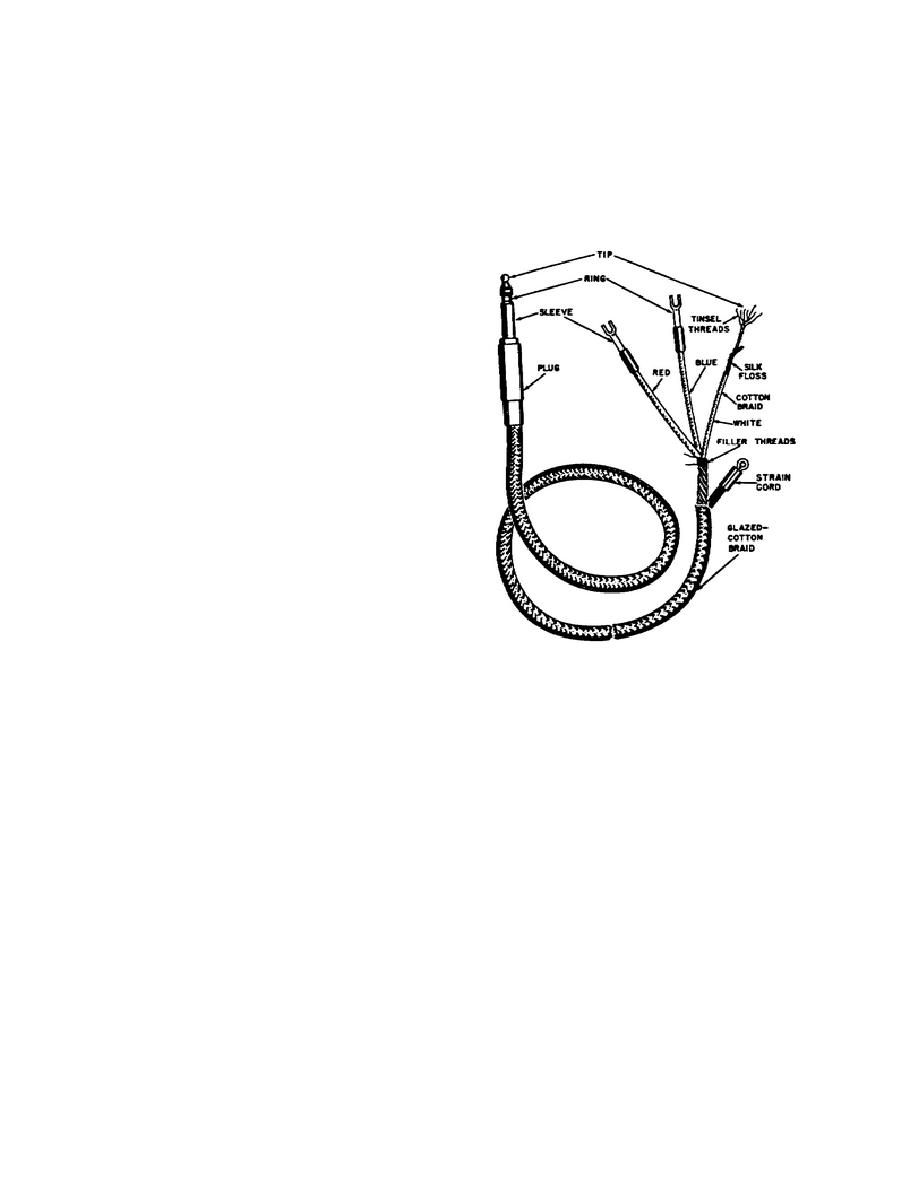
(2) Figure 43 illustrates a common-battery cord connected to a plug. Its general appearance is similar to the
local-battery cord. The common-battery cord, however, instead of having only two conductors, has three. As mentioned
previously, the conductors of a common-battery cord are the tip (white wire), ring (blue wire), and sleeve (red wire), and
they are connected at the free end of the cord to the corresponding terminals (tip, ring, and sleeve) of the plug.
(3) The other ends of the cord conductors are soldered or clipped to individual metal lugs and connected to
terminals in the interior of the switchboard which connect the cords to the remainder of their respective cord circuits. The
tip and ring of the cord and plug connect the line wires from the telephone stations to the cord circuit by way of the
various line jacks.
(4) Each cord conductor consists of
fine tinsel threads and is insulated with a layer
of silk floss covered by cotton braid of the
proper identifying color (white, blue, or red).
As in the case of the local-battery cord, a strain
cord also is provided which has the same
function as the strain cord of the local-battery
switchboard.
b. Common-battery line jacks.
(1) The line jacks shown in figures 41
and 42 are called simple jacks. They have three
contacts--tip, ring, and sleeve--to correspond to
the contacts of the plug and cord. It will be
remembered that the local-battery jack has only
two contacts--tip sleeve. The tip and ring
contacts of the simple common-battery line
jacks are spring-type contacts. They make
contact with the tip and ring contacts of the
plug when a plug is inserted in the jack.
FIGURE 43. Common-Battery Switchboard
Cord and Plug.
93



 Previous Page
Previous Page
